Kite Surfing Essentials: Gear, Techniques, Destinations
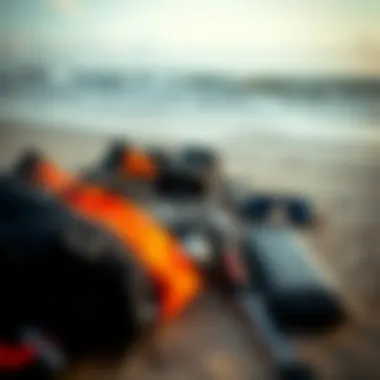
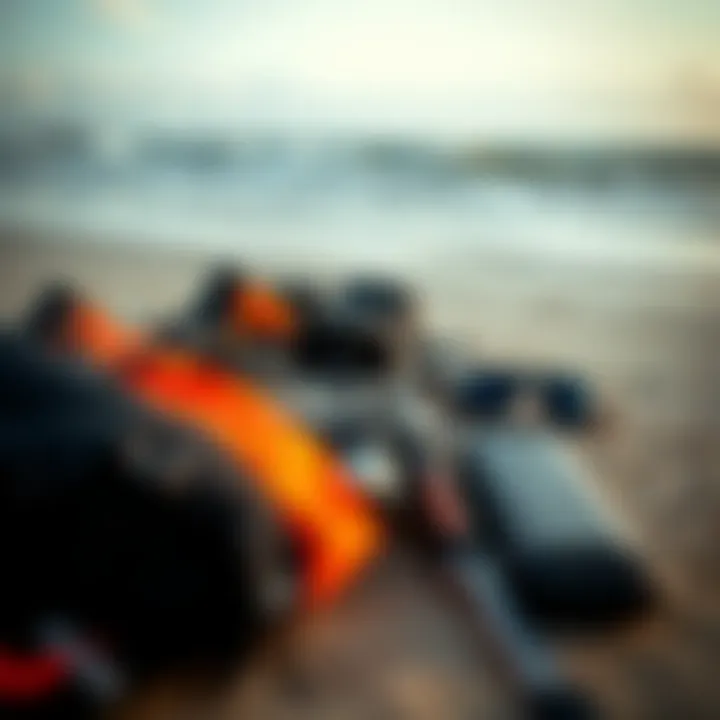
Intro
Kite surfing, also known as kiteboarding, is more than just a thrilling sport; it's a unique blend of surfing, sailing, and flying. It has captured the hearts of thrill-seekers and nature lovers alike, merging the elements of wind and water in a stunning dance. Whether you're riding the waves for the first time or you're a seasoned rider aiming to polish your technique, understanding the intricacies of this sport is crucial to enhancing your experience.
In this guide, we’ll wander through a variety of essential topics, helping you gear up for kite surfing. From the indispensable equipment that every beginner should know about to the advanced gear favored by experienced practitioners, we’ll leave no stone unturned. We will also discuss key techniques that can help new kite surfers stay afloat and give seasoned veterans some expert tricks to up their game. Moreover, safety protocols will be highlighted so you can ride with confidence, and we’ll explore popular kite surfing destinations that will have you packing your bags and chasing the wind.
So grab your board, and let’s embark on this exciting journey into the world of kite surfing!
Gear and Equipment
Essential Kiteboarding Gear for Beginners
Diving into kite surfing requires some pivotal gear to ensure both safety and enjoyment. Here’s a closer look at what you’ll need:
- Kite: This is the heart of kite surfing. For beginners, it's wise to start with a true all-rounder kite. Look for a size that compliments your weight and the wind conditions you'll be encountering. Popular brands include Naish, Cabrinha, and Slingshot, each providing excellent options.
- Board: A beginner’s board should be wide and forgiving, which helps with stability. Directional boards are great for surfing, while twin-tips are versatile and easier to learn on. Brands like Liquid Force and North offer boards well-suited for novices.
- Harness: This is the crucial point of connection between you and the kite. Opt for a comfortable and secure harness that will allow you to ride with your body, rather than your arms, which can get pretty tiring.
- Safety Leash: This prevents your kite from flying away if you happen to crash. It's a must-have, especially when you are just starting.
- Helmet and Impact Vest: Safety is paramount, so investing in a good helmet and impact vest is essential to protect yourself from unexpected falls and surf breaks.
"The kite surf community is all about support. Don’t hesitate to ask for advice on gear from those who have walked the path before you."
Advanced Equipment for Experienced Riders
Once you've nailed the basics and feel confident on the water, you might want to consider upgrading your gear for enhanced performance.
- High-Performance Kites: Advanced riders might look for kites that offer quicker turns and better stability in high winds. Brands like Ozone and F-One have some fine products here.
- Carbon Fiber Boards: These are lighter and provide superior pop and maneuverability compared to standard boards. They require a deft touch but reward skilled riders with greater performance.
- Foot Straps/Bindings: For those proficient in tricks, moving to foot straps or bindings can enhance control and help execute advanced maneuvers.
- Upgrade Your Harness: Consider a waist harness; they give more freedom of movement and are preferred for freestyle tricks.
With the right gear, you’ll be well-equipped to tackle the waves beautifully and confidently. Remember, it’s not just about what you ride, but how well you understand your equipment and the elements around you.
Techniques and Tips
Basic Riding Techniques for Newbies
For newcomers, mastering the fundamentals is crucial. Here’s how to get started:
- Starting Position: Begin with your kite positioned at the side, using your board to remain balanced. This is where a solid harness helps keep you secure while you begin gliding.
- Kite Control: Practice flying your kite on land before hitting the water. The more time you spend understanding how the kite reacts, the more comfortable you will feel.
- Edge Control: Lean back, keeping your weight on your heels as you begin to ride. This helps control your speed and direction effectively.
- Stopping: When you want to stop, edge your board upwind, using the tension in the lines to slow you down.
Expert Tricks to Elevate Your Skills
Once you’ve mastered the basics, it’s time to take it up a notch with some tricks that’ll impress!
- Jumping: Start by getting comfortable with the speed and tension in your lines. Build momentum, then pull down sharply on the back of the kite to launch yourself skyward.
- Spins: Learn to redirect the kite while jumping, allowing you to spin and land seamlessly back on the water.
- Handle Passes: Advanced riders often execute a handle pass, where the kite is thrown to the other hand mid-air. This requires confidence and practice.
Both patience and practice are key aspects in kite surfing, so give yourself time to grow, develop your skills, and enjoy the ride.
This guide aims to equip you with the essential knowledge to dive into the world of kite surfing, ensuring your experience is as enjoyable as it is thrilling. For more comprehensive insights, check Wikipedia or the Encyclopedia Britannica. Such resources can be invaluable as you prepare for your kite surfing journey.
Understanding Kite Surfing
Kite surfing, an exhilarating blend of sailing and surfing, is more than just a sport; it’s a passion that unites enthusiasts across the globe. Understanding kite surfing is essential for anyone looking to dip their toes in the waters of this exciting activity. It encompasses a range of aspects from the foundational gear needed, to mastery of techniques, to safety practices that ensure a thrilling yet safe experience. Grasping the core principles behind kite surfing is key for both novices and seasoned practitioners alike.
Definition of Kite Surfing
At its essence, kite surfing involves riding on a board while being propelled by a large kite. This kite, harnessing the power of the wind, allows riders to glide across the water’s surface at remarkable speeds. The sport can be enjoyed on flat waters, waves, or even light winds, depending on the rider’s skill level and conditions. Although it might sound simple, kite surfing requires a combination of balance, strength, and a good understanding of wind patterns. In its broadest terms, it is about navigating not just the water, but also the winds that govern it.
History and Evolution
Kite surfing didn’t spring up overnight; it has a rich history that dates back decades. The origin traces back to the 13th century, attributed to the ingenious minds who harnessed kites for various practical purposes. Fast forward to the late 20th century, and you’ll find the sport beginning to flourish as we know it today. Originally seen in the 1990s, it evolved from parasailing and windsurfing, merging aspects of both.
The early kite surfers were often seen using makeshift equipment, but with time, the technology has significantly advanced. Now, high-performance kites and boards are crafted from durable materials, which are designed to handle varying conditions. This evolution not only made kite surfing accessible to the masses but also broadened the horizons of what is achievable on the water.
Benefits of Kite Surfing
Kite surfing stands out for a myriad of reasons, catering to both physical and mental dimensions. Among its many benefits:
- Physical Fitness: Kite surfing provides a full-body workout. Most muscles are engaged during the process of controlling the kite and riding the board.
- Mental Clarity: Riding on water, while feeling the wind against your skin, serves as a perfect escape from the hustle of daily life. It enables a connection with nature, fostering mindfulness.
- Community Engagement: The kite surfing community tends to welcome newcomers with open arms. Shared experiences can lead to lasting friendships.
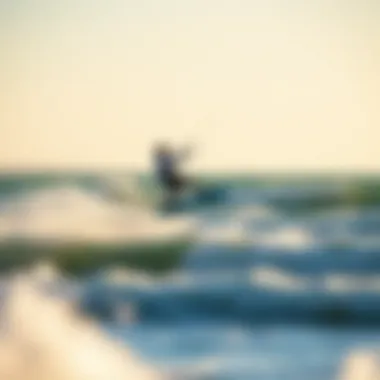
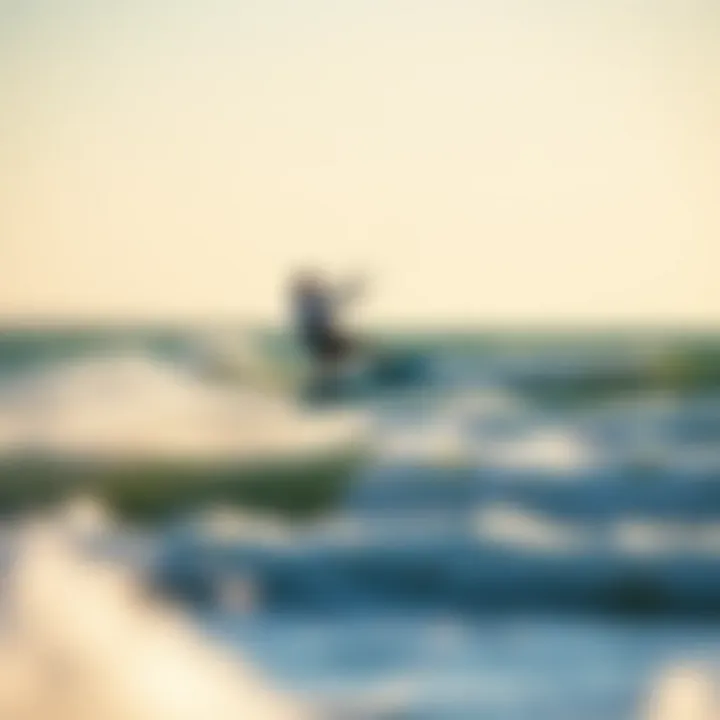
"Kite surfing is not just about the ride; it's about the people you meet and the places you visit."
- Adventure and Exploration: As a kite surfer, you’re always on the lookout for new spots and locations, adding an adventurous flair to the experience.
In summary, understanding kite surfing paves the way for an enriching journey, both personally and socially. Engaging in this sport goes beyond the realm of just riding the waves; it invites you into a world of camaraderie, excitement, and exploration.
Essential Gear for Kite Surfing
Understanding the Essential Gear for Kite Surfing is crucial for both newcomers and veterans alike. The right equipment can elevate your performance and enhance your overall experience on the water. As kite surfing blends skill, wind, and waves, having the proper gear not only ensures your effectiveness but also significantly affects your safety. Below, we delve deeper into critical components that every kite surfer should consider.
Kites: Types and Functions
When it comes to kites, there's a smorgasbord of options each designed for unique conditions and riding styles. Here’s a closer look at common kite types:
- C-Kites – Ideal for performance and tricks, these kites offer excellent upwind capabilities. They are less forgiving for beginners but favored by advanced riders.
- Bow Kites – These kites operate well in a variety of conditions, making them a favorite among beginners. Their design allows for better stability and depower options.
- Delta Kites – Known for versatility and ease of use, delta kites are well-suited for light wind and difficult conditions.
Understanding the functions of each type can help you tailor your choice to fit not only your skill level but also the kind of conditions you’ll be riding in.
Boards: Choosing the Right One
Choosing the right board is like picking the right shoes; it can make a world of difference. Boards come in different shapes and sizes, each suited for specific purposes:
- Twin-Tip Boards – These are the most common for beginners, allowing for easy riding in both directions.
- Directional Boards – Aligned with surfboards, these are primarily designed for riding downwind, providing a different feel and experience.
It's vital to consider your weight, skill level, and preferred riding style when selecting a board. An appropriate board not only enhances performance but also adds to comfort, helping you ride for longer periods without fatigue.
Safety Equipment: Importance of Gear
Safety gear is not just a suggestion; it’s a necessity. The open sea can be unpredictable, and having the right safety equipment is essential:
- Helmet – Protects your head from impacts with the kite or board.
- Impact Vest – Provides flotation and cushioning against falls.
- Leash – Ensures your kite remains connected to you, preventing loss in windy conditions.
"A kite surfer without safety gear is like a tightrope walker without a net—it's risky business."
Investing in quality safety equipment reduces the chance of accidents and can be a decisive factor in emerging from tricky situations unscathed.
Accessories: Harnesses and Lines
While the kite and board are your primary tools, don't overlook the importance of accessories. Harnesses and lines might seem minor, but they play a pivotal role:
- Harness – Connects you to the kite, so comfort and fit are key. There are two main types: seat harnesses, which sit lower on the body, and waist harnesses, which allow for more flexibility.
- Lines – Different lengths and materials can affect how your kite behaves. When choosing lines, ensure they're suitable for your kite type and conditions where you plan to ride.
By paying attention to these details, you create a seamless connection between you and your kite, resulting in better handling and control.
In summary, equipping yourself with the right gear is foundational for kite surfing. Whether you are searching for kites, boards, safety equipment, or accessories, investing time and effort in understanding your options is vital. This thoughtful approach not only enhances performance but also enriches your kite surfing experience.
Techniques for Kite Surfing
Understanding various techniques in kite surfing is crucial for anyone looking to thrive in this exhilarating sport. Mastery of these skills can make the difference between an average session on the water and an unforgettable experience. Each progression in technique unlocks new challenges and thrills, ensuring that kite surfers of any level can keep pushing their limits.
Basic Techniques: Getting Started
For those just dipping their toes into kite surfing, grasping the basic techniques is akin to learning to walk before you can run. At this stage, focus on three key aspects: kite control, body positioning, and water starts.
- Kite Control: This involves becoming familiar with how the kite responds to your input. It's important to practice flying the kite on land before hitting the water. Keep the kite powered up while maintaining control.
- Body Positioning: When you start, keep your knees slightly bent and your body low to the board. Keeping your weight distributed evenly will help with balance.
- Water Starts: Once you can manage the kite's movements, practice getting up on the board. This involves the correct timing between pulling on the lines and shifting your weight onto the board.
Beginners should use the proper gear, such as a smaller kite and a larger board, which provides stability and increases chances of success as they learn.
Intermediate Skills: Tricks and Turns
Once you have a solid foundation, it's time to turn your eyes toward tricks and turns. This is where kite surfing starts to get fun and creative. Here’s where you’ll focus on:
- Transitions: Learn to switch directions smoothly. This involves a mix of edging and turning. As you move from heel to toe-side, maintain tension in your lines.
- Basic Tricks: Simple tricks such as jumps and grabs can be easily integrated into your routine. Practicing these will not only boost your confidence but also impress fellow surfers.
- Riding in Different Conditions: Start exploring varied water conditions, such as chop and waves. Every new element adds to your skill set.
Each of these intermediate skills will serve as building blocks towards more advanced maneuvers.
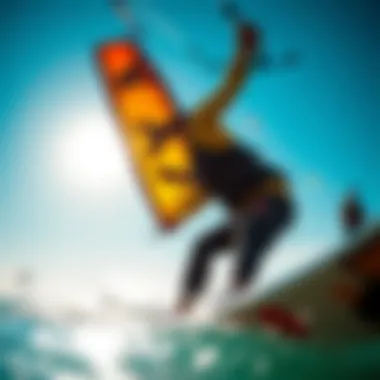
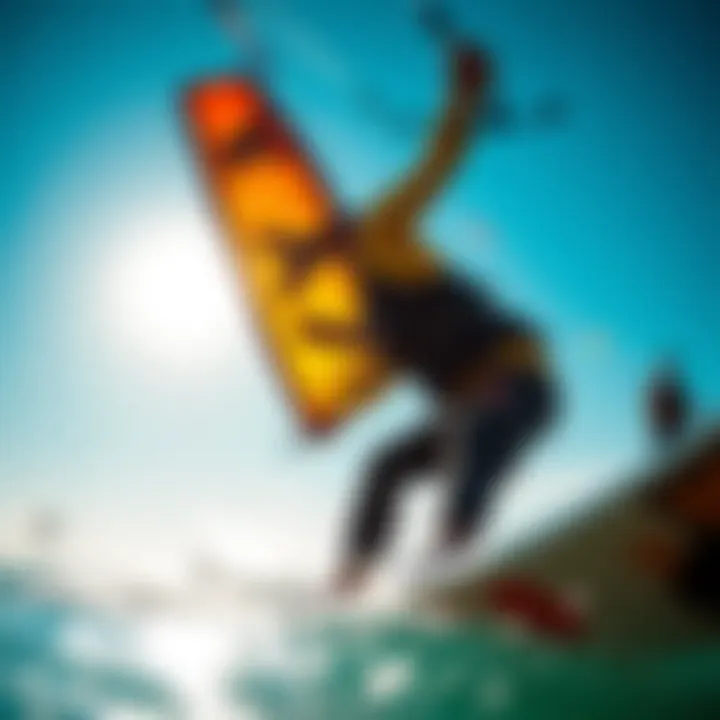
Advanced Maneuvers: Jumping and Tricks
As you progress to advanced techniques, your repertoire of tricks expands exponentially. Learning advanced maneuvers like jumping requires not only skill but also a good understanding of timing and kite control.
- Jumping: This involves a combination of speed, kite position, and body control. Start with small jumps on flat water and gradually add height. Remember to anticipate the landing, keeping your knees bent to absorb impact.
- Tricks: Tricks such as handle passes, rotations, and loops demand creativity and finesse. The more you practice, the more comfortable you will become in attempting these challenging moves.
- Mastering the Wind: Understanding wind patterns and how they affect your jumps and tricks can greatly enhance your performance.
The joy of executing a perfect jump cannot be overstated, especially when you realize how much effort went into mastering it.
Common Mistakes to Avoid
Even seasoned kite surfers can find themselves falling into certain pitfalls. Here are some common mistakes to avoid:
- Oversteering the Kite: Beginners often make the mistake of pulling too hard on the bar. This can cause the kite to stall, leading to a crash. Light, smooth inputs yield better results.
- Neglecting Body Position: Failing to maintain proper body alignment can lead to falls and loss of control. Always keep your core engaged and knees bent for better balance.
- Ignoring Safety Protocols: Never disregard safety measures such as checking your gear or understanding local conditions. Always know your emergency protocols.
While kite surfing is fun, safety should always come first. Stay refreshed on safety practices.
Engaging in these techniques mindfully can make your kite surfing experience much more enjoyable and skillful. Remember, practice makes perfect, and embracing learning from every session will help you ascend the ranks in this thrilling water sport.
Safety Considerations in Kite Surfing
Kite surfing provides a thrilling experience with the rush of wind and waves. Yet, safety must always be front and center while diving into this adrenaline-fueled sport. The management of your equipment, environmental factors, and personal preparedness plays a crucial role in ensuring that your kiteboarding adventure is enjoyable and, most importantly, safe.
Understanding specific safety considerations stirs more than just awareness; it promotes good practices that can mitigate the risks associated with kite surfing. With the right information and preparedness, you can protect yourself from potential hazards while delighting in the freedom that comes with being out on the water.
Here are some critical aspects of safety in kite surfing:
- Preventing accidents before they happen.
- Understanding your environment.
- Having a plan in place when things go wrong.
Pre-Surfing Safety Checks
A seasoned kiteboarder knows that the groundwork for a safe session begins long before hitting the waves. Before any kite surfing adventure, it's essential to perform thorough safety checks. This involves:
- Inspecting your gear: Always look over your kite, lines, and harness before use. Tiny frays or wear and tear can lead to a catastrophic malfunction.
- Setting up in a clear area: Make sure you're not surrounding by people, obstacles or unyielding structures while assembling your gear. It minimizes the risk of accidental injuries.
- Double-checking your harness: Ensure it's snug and secure. A poorly fitted harness can result in serious injuries during unexpected events.
- Checking the weather: Keep an eye on local wind readings. Knowing the wind conditions can aid in anticipating potential dangers.
These safety checks aren’t just good practice; they are your first line of defense against mishap.
Understanding Weather Conditions
Kite surfing is ultimately a dance with nature, and understanding the weather is a partner you can't afford to overlook. The wind, waves, and weather conditions can change drastically, and being able to interpret that can save your life.
- Wind direction and speed: Knowledge of how wind behaves in your chosen spot can drastically affect your safety. For example, offshore winds can push you away from the shore, increasing the risk of becoming stranded.
- Local weather patterns: Different locations have distinct climates. Places like Cape Hatteras or the beaches of Tarifa can have sudden storms that catch even experienced surfers off guard. It’s best to study these trends before you go.
- Forecast and warnings: Always check the weather forecast and heed any warnings. Local meteorological services often provide crucial information that could shape your decision to ride or stay on land.
Taking these elements into account helps ensure you are not just flying your kite but also respecting the power of mother nature.
Emergency Protocols
Even the most prepared kiteboarder can encounter unexpected challenges. Having an emergency plan not only keeps you safe but also allows you to enjoy the sport more fully, knowing you’re ready if something goes awry.
- Know your exit points: Before heading out, familiarize yourself with the nearest points to come ashore in case conditions worsen unexpectedly.
- Buddy system: Kite surfing with a friend can be a lifesaver. If something goes wrong, having someone on hand to assist can make all the difference.
- Deployment of safety systems: You should be comfortable using your safety leash and quick release mechanisms. Make it a point to practice these safety skills on land before you hit the water.
- Emergency signals: Agree on a signal or flag with your kiteboarding partner to communicate in case of trouble. A distress signal could be something as simple as waving your arms overhead.
"Preparedness is the best guarantee of safety. When the unexpected happens, don’t just react- have a strategy."
In summary, kite surfing is exhilarating and fulfilling, but without the right safety measures, the risks can overshadow the joy it delivers. Prioritizing safety checks, understanding weather conditions, and having a reliable emergency protocol are essential steps toward ensuring your adventures are filled with memories rather than mishaps.
Kite Surfing Destinations Worldwide
Kite surfing is much more than just a hobby; it's an exhilarating connection between the rider and nature. The destination plays a pivotal role in shaping the experience. It's not only about the waves and wind but also the local culture, weather patterns, and accessibility. Choosing the right spot can elevate your session from routine to unforgettable. This section delves into the best kite surfing hotspots, catering to novices and experts alike, truly embodying the spirit of adventure that kite surfing represents.
Top Locations for Beginners
For those just dipping their toes into kite surfing, certain locations offer calm waters and consistent winds, making the initiation less daunting. Here are a few friendly spots tailored for beginners:
- Kite Beach, Cape Town, South Africa: Recognized globally as a kiteboarding paradise, this location combines consistent winds and warm waters, perfect for those learning the ropes. The local schools and rental shops provide guidance for novices.
- The Wildwoods, New Jersey, USA: With broad stretches of flat water and manageable winds, this destination is ideal for those looking to sharpen their skills without facing overwhelming conditions.
- Bonaire, Caribbean: This tropical getaway hosts shallow waters and steady breezes. The picturesque backdrop adds to the allure for beginner kiters eager to learn.
Kite schools at these locales frequently offer introductory lessons that cater specifically to novices, blending practical training with safety.
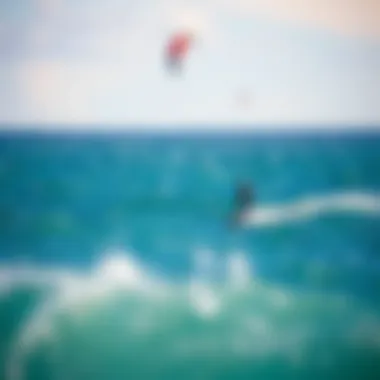
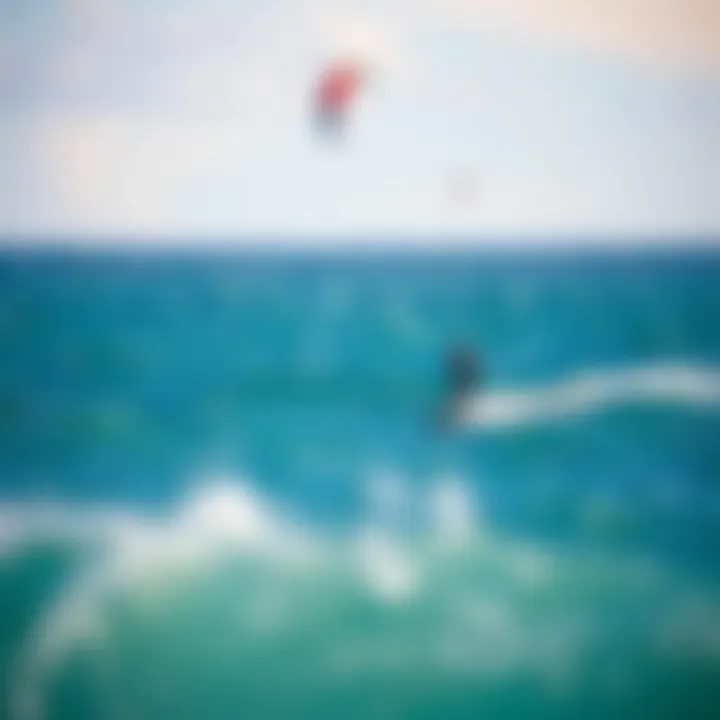
Advanced Spots: Challenges Await
As kite surfers progress, they often seek out more challenging environments that push their limits and enhance their skills. Here’s where seasoned riders can truly thrive:
- Hossegor, France: Renowned for its powerful waves, this beach demands precision and skill from advanced kiters. The surf conditions here can get intense, providing excellent opportunities for trick performances and jumps.
- Maui, Hawaii: This iconic spot is famous for its downwinders and hefty waves. The strong winds and current challenges advanced kite surfers, while the stunning scenery provides perfect Instagram moments.
- Tarifa, Spain: Known as the kite surfing capital of Europe, Tarifa hosts a significant wind window, ensuring that experienced kite surfers can test their mettle against the elements.
These destinations often host competitions, giving experienced riders the chance to further their skills in a more intense environment while also potentially making a name for themselves in the kite surfing community.
Seasonal Considerations for Travel
Before packing the gear and setting off, understanding the seasonal patterns is crucial for an optimal kite surfing experience. Different locations have varying wind conditions throughout the year. Here are things to consider:
- Wind Patterns: Some areas, like Cape Town, experience strong winds during summer months, while in the Caribbean, winter months provide the most consistent conditions.
- Crowds: Consider traveling outside peak season if you prefer a less-crowded experience. Off-peak months sometimes reveal hidden gems and better local interaction.
- Weather: Always check forecasts in advance. An unexpected storm or change in weather can drastically alter your plans.
Planning your trips according to these factors can significantly enhance your kite surfing experience, allowing you the chance to hone your skills while enjoying the surrounding beauty.
"Kite surfing is more than just riding; it's about embracing the journey, the location, and the community that surrounds this thrilling sport."
Kiteboarding Community and Culture
Understanding the culture behind kiteboarding is almost as crucial as mastering the actual skills out on the water. The vibrant community surrounding kiteboarding forms a network of passion and knowledge, where riders can share their experiences, tips, and best practices. This communal spirit fosters camaraderie and encourages newcomers to pursue the sport with confidence. As kiteboarding continues to grow in popularity, embracing this culture can enhance your overall experience, making the sport not just about individual prowess, but also about belonging to something larger.
Joining the Kiteboarding Community
Getting involved in the kiteboarding community starts with being open to the idea of learning and connecting with others. Many regions with kiteboarding spots have local clubs or online forums where enthusiasts gather. Facebook groups, Reddit communities, and other social media platforms are brimming with kiteboarders eager to share insights. Whether you are asking for advice on gear or looking for local meet-ups, these spaces are invaluable. Finding a local kiteboarding school can also be an excellent way to meet fellow riders. Being part of a group not only provides support but also enhances your learning curve through shared experiences.
- Connect with locals: Attend workshops and community events to meet other kite surfers.
- Participate in online communities: Platforms like Reddit offer a plethora of discussions on gear and techniques.
- Join clubs: Many seaside towns have local kiteboarding clubs that welcome new members.
Events and Competitions
Kiteboarding events and competitions serve as focal points for the community. They provide a thrilling environment where both amateur and seasoned riders showcase their skills. Attending these events can be incredibly inspiring, making you want to push your own limits. Competitions range from local grassroots gatherings to international tournaments, bringing together riders from various backgrounds to celebrate the sport.
Participating in an event can also be an uplifting experience, regardless of whether you place on the podium. It's a chance to experience the camaraderie of fellow competitors and watch the best in the sport demonstrate their skills. Some notable events include the World Kiteboarding League and local kiteboarding festivals which often feature workshops, freestyle competitions, and entertainment for fans.
Sharing Knowledge and Experience
Knowledge sharing is a fundamental aspect of the kiteboarding culture. Many seasoned riders are more than willing to pass on what they’ve learned through trial and error. This spirit of generosity is what binds the community together. Workshops, local meet-ups, or even just casual conversations on the beach can provide insights that are not found in manuals or online tutorials.
- Mentorship: Sometimes, a more experienced rider might take you under their wing, accelerating your learning process.
- Video analysis: Many kiteboarders use video footage to critique techniques, which can be incredibly enlightening for all involved.
- Workshops: Look out for clinics or events where experienced riders share advice on improving techniques or safety measures.
"The most rewarding moments come when you share your passion with others. Kiteboarding isn’t just a sport; it’s a lifestyle that thrives on community spirit and shared growth."
Future of Kite Surfing
The future of kite surfing is an exciting realm filled with potential, reflecting not just a trend in water sports but a broader evolution of how we interact with nature through sport. As technology progresses, the experiences we can create on the water have become increasingly dynamic and immersive. Indeed, staying abreast of these changes is vital for enthusiasts who want to enhance their skills while ensuring they enjoy the sport to its fullest. In this section, we'll explore technological advancements, environmental considerations, and methods to expand kite surfing's reach globally.
Technological Advancements
Emerging technologies are seriously shaking things up in kite surfing. New materials are lighter and stronger, thanks to advancements in engineering, which translates to kites that provide better performance and control. For instance, consider the shift from the traditional Dacron fabric to advanced ripstop fabrics. These materials significantly increase durability while reducing drag. Enhanced kite designs now also feature adjustable airflow systems, allowing riders to fine-tune their kites according to wind conditions.
Another fascinating development is the rise of electric traction devices. These gadgets can help kite surfers enter the waves even when the wind isn't blowing strong. Think of it like having a buddy on standby – while you're ready to roll out, it just barely nudges you along until it’s time to take to the skies!
Moreover, apps and smart watches enabling kite surfers to track their performance, understand wind patterns, and even predict weather changes are increasingly common. A rider can check wind conditions in multiple locales at the touch of a button, making planning a surfing trip a breeze. It’s clear that technology is not just a bonus, but a fundamental player in the progression of kite surfing.
Environmental Considerations
As the sport grows, so does the impact on the environment. Keeping kite surfing sustainable is crucial for preserving the beauty of our coastlines and waters. That’s why you'll find a growing number of kite surfing communities actively engaging in eco-friendly practices. For example, some destinations have already begun to promote the use of biodegradable kite components.
Using solar panels for energy at kite surfing schools also helps reduce the carbon footprint. Additionally, various organizations encourage kite surfers to participate in beach cleanups, policing areas where we ride to ensure they remain pristine.
It's also worth noting that understanding climate change's substantial effects on wind and wave patterns is critical for kite surfers. As weather becomes more unpredictable, recognizing these shifts can keep communities informed and prepared to adapt their practices effectively. Thus, caring for the environment is more than just a responsibility; it’s essential for the continued joy that kite surfing brings to individuals around the globe.
Expanding the Sport's Reach
Kite surfing has a knack for bringing people together, and now, its reach is expanding beyond traditional sunny coastlines. The sport's appeal is growing in new regions, often where kite surfing is still an emerging pastime. This surge in popularity is not just driven by favorable weather conditions but also by a community eager to share knowledge and foster inclusivity.
Adventurous travelers are seeking lesser-known hotspots or even learning to kite surf in new cultural contexts. From Africa’s Essaouira to hidden creeks in South America, kite surfers are always on the hunt for the next spot that promises adventure and thrill.
Increasing accessibility through kite surfing schools offering introductory courses worldwide is also significant. Whether it’s a sprawling beach or a serene lake, more individuals are discovering the joy of catching waves without having to travel half the globe. This accessibility is nurturing an entirely new generation of kite surfers that prioritize skill and fun over exclusivity.
Kite surfing's appeal is its ability to transcend borders, cultures, and environments, ensuring its lasting legacy in the watersports community.















